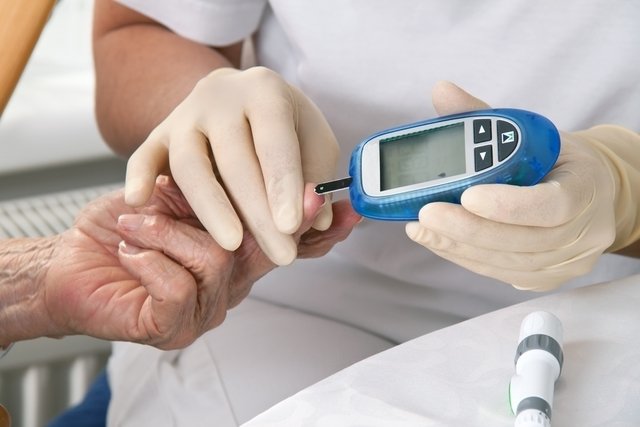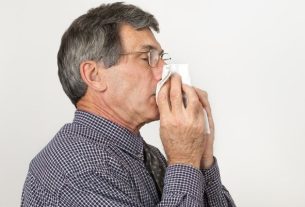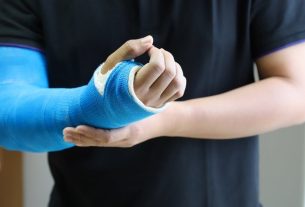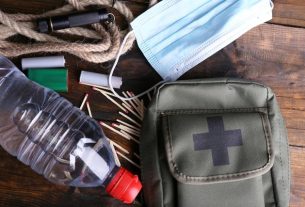To be able to help a diabetic, it is important to know whether it is an episode of excess blood sugar (hyperglycemia) or a lack of blood sugar (hypoglycemia), as both situations can happen.
Hyperglycemia is more common in diabetics who do not receive adequate treatment or do not follow a balanced diet, while hypoglycemia is more common in people who are taking insulin treatment or who have gone a long time without eating, for example.
If possible, the first thing you should do is check the person’s blood sugar, using a device suitable for measuring the amount of sugar in the blood. Generally, values below 70 mg/dL indicate hypoglycemia and values well above 180 mg/dL may indicate hyperglycemia, especially if the person has not finished eating.

1. Hyperglycemia – high sugar
When blood sugar is high, also called hyperglycemia, the device’s value will show values above 180 mg/dL, on an empty stomach, or above 250 mg/dL, at any time of the day.
Additionally, the person may experience confusion, excessive thirst, dry mouth, tiredness, headache and altered breath. In these cases, you must:
- Look for an SOS insulin syringe, which the person can have for emergency situations;
- Inject the syringe into the region around the navel or upper part of the arm, making a crease with your fingers, keeping it until the end of the injection, as shown in the image;
- If, after 15 minutes, the sugar level remains the same, you must call medical help by immediately calling 192 or take the person to the hospital;
- If the victim is unconscious but breathing, they must be placed in the lateral safety position, pending the arrival of medical help. Learn how to correctly perform the lateral safety position.
If there is no emergency insulin syringe, it is recommended to immediately call medical help or take the person to the hospital so that the appropriate dose of insulin can be administered.
Furthermore, if insulin is administered, it is important to keep an eye on the blood sugar level for the next hour, as there is a risk that the value will drop too much if the insulin dose has been higher than necessary. If the value drops below 70 mg/dL, it is important to place sugar directly on the inside of the cheeks and under the tongue, so that the value increases and stabilizes.
2. Hypoglycemia – low sugar
When blood sugar levels are low, called hypoglycemia, the device shows blood glucose levels below 70 mg/dL and it is common for the person to present signs such as tremors, cold skin, sweating, paleness or fainting. In these cases, it is important:
- Place 1 tablespoon of sugar or 2 packets of sugar inside the cheeks and under the tongue;
- If the blood sugar value does not increase or the symptoms do not improve within 10 minutes, the person should be given sugar again;
- If after another 10 minutes the sugar level or symptoms remain the same, you should call for medical help by immediately calling 192 or take the person to the hospital;
- If the person becomes unconscious but breathing, they should be placed in the lateral safety position while waiting for medical help. See how to do the lateral safety position.
When blood sugar stays low for a long time, it is possible for a person to go into cardiac arrest. Therefore, if you notice that the person is not breathing, you should call medical help and quickly begin cardiac massage.
See how to do cardiac massage correctly.
Other important first aid for diabetics
In addition to the most serious situations, such as hyperglycemia or hypoglycemia, there are also other first aid measures that are important in everyday situations, which can represent a greater risk of complications for diabetics, such as having a wound on the skin or spraining the foot. , for example.
1. Skin wounds
When a diabetic is injured, it is important to take good care of the wound, because even if it is small and superficial, a diabetic’s wound is more likely to present complications such as ulcers or infections, especially when it occurs in more humid or stuffy places such as the feet, the folds of the skin or the groin, for example.
During treatment, it is important to take care to avoid infections, and should:
- Use clean towels to dry the affected skin area;
- Avoid contact with domestic animals;
- Avoid places with sand or dirt;
- Avoid tight clothing or shoes over the wound.
Therefore, the ideal is to always keep the wound clean, dry and away from situations that could worsen the wound, especially until healing is complete.
In addition to taking care of the wound, it is also essential to be aware of some signs that indicate the development of complications, such as the appearance of redness, swelling, severe pain or pus at the site. In these cases, it is recommended to go to the general practitioner.
When the wound is very small, but takes more than 1 month to heal, it is advisable to go to a nursing consultation to assess the need for more specialized treatment, with dressings that promote healing.
2. Twisting the foot
If a diabetic twists their foot or other joint, they should stop physical activity and avoid forcing the affected area, in addition to avoiding walking for a long time and climbing stairs, for example.
Furthermore, you should keep the foot elevated to promote circulation and place ice on the affected area for 20 minutes, twice a day, remembering to wrap the ice in a damp cloth to avoid burning the skin.
Twisting usually causes swelling and pain, and can leave the area hotter and with bruises. In more serious cases, where there is intense pain and swelling that does not improve, a doctor should be consulted to assess the severity of the injury and check whether there has been a fracture.
Warning signs to go to the doctor
A doctor should be consulted in the following situations:
- High sugarwith capillary blood glucose levels above 180 mg/dL for more than 1 hour, on an empty stomach, or above 250 mg/dL for more than 1 hour, after eating, or when the patient becomes unconscious.
- Low sugar, with capillary blood glucose levels below 70 mg/dL for more than 30 minutes, or when the patient becomes unconscious;
- Complicated skin wounds, with fever above 38ºC; presence of pus in the wound; increased redness, swelling and pain at the site; worsening of the wound healing process, loss of sensitivity around the wound or tingling, or the presence of sweat and chills on the body. These signs indicate that the wound site may be infected, with a greater risk of the wound worsening and complications, such as ulcers.
In the most serious cases, when these signs are ignored and adequate treatment is not given, the affected tissue may suffer necrosis, which happens when the region does not receive enough oxygen and the tissues die, making it possible to amputate the affected limb.
In these cases, medical help must be called quickly .

Sign up for our newsletter and stay up to date with exclusive news
that can transform your routine!
Warning: Undefined array key "title" in /home/storelat/public_html/wp-content/plugins/link-whisper-premium/templates/frontend/related-posts.php on line 12
Warning: Undefined array key "title_tag" in /home/storelat/public_html/wp-content/plugins/link-whisper-premium/templates/frontend/related-posts.php on line 13



